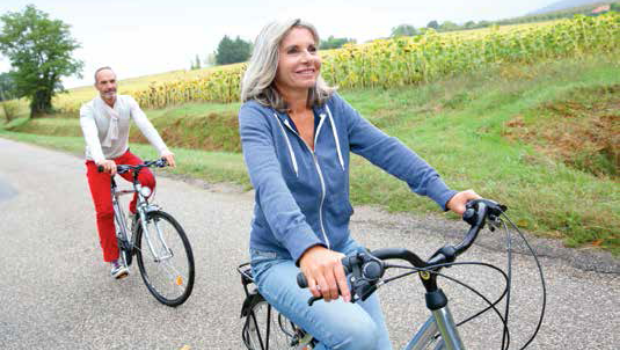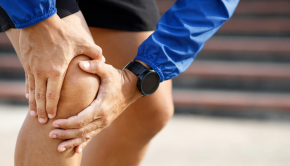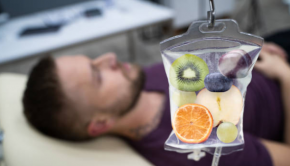Good Inflammation, Bad Inflammation! by Dr. Warren Slaten, M.D.
Inflammation is one of the functions that we require on a daily basis. In other words, we need inflammation to survive. This is good inflammation. On the other hand, when there is increased inflammation throughout the body, an environment for disease is created. This is bad inflammation.
When you get a wound, there is damage to tissue that needs to be repaired. For instance, if you have a small cut in your body, you need good inflammation, or you will have a hole or opening that could become permanent. When the wound forms, inflammation starts to heal that wound. First, there are chemical signals that increase the blood flow to the area of the wound. This is followed by the migration of growth factors to the area. Those growth factors lead to the formation of collagen which is the building block of many of the tissues in our body. When that collagen forms, the tissue starts to heal and the wound fills in. Thus, instead of a hole in your body, you will have new tissue formed and the hole is filled in.
I work with this good inflammation when I treat injured tissue in the body. When muscles are injured, they generally heal fairly quickly. Even if a muscle is torn, it will generally heal in a matter of weeks. That is because muscles get ample blood flow, hence their red color. Tendons and ligaments do not get much blood flow so when they are injured, they heal very slowly, if at all. This lack of blood flow is reflected in their whitish-yellow color. Those with tendonitis often experience longstanding pain that is unresponsive to many types of treatments.
Fortunately, there are treatments that work with this ‘good inflammation’ to heal tendonitis, ligament injuries and arthritic pain. One of the best treatments for stimulating this heathy reaction is prolotherapy. By instilling a small amount of a dextrose solution over the tendon and ligament, this creates a mild irritation. This irritation stimulates a healing reaction in the body. Increased blood flow delivers growth factors to the tendon or ligament. These growth factors lead to collagen production and the growth of healthy tissue. With prolotherapy, you are changing an injured tendon which may have tears to a healthy tendon that is able to function normally.
Prolotherapy is not a quick fix. Rather, the treatment stimulates long-term healing. The body has the ability to heal itself but for tendons and ligaments this is very challenging for two reasons. One challenge for tendons and ligaments is the decreased blood flow to these tissues, as described above. The other challenge is that these tissues are often injured due to repetitive biomechanic stress that wears away at the tendon. This stress is often persisting because you continue the irritating activity. Thus, it becomes hard to heal the tissue when the causative stress continues. A potential third factor is the use of anti-inflammatory medication such as ibuprofen (Advil, Motrin, Aleve). This impedes the body’s own healing mechanisms by preventing the increased blood flow and migration of growth factors that lead to resolution of the localized injury. In other words, by using anti-inflammatory medication for an injury, you are blocking the ‘good inflammation’ that can potentially heal the injury. On the other hand, prolotherapy stimulates this good inflammation that nurtures healing of tendons, ligaments and arthritic pain.
Now let’s talk about bad inflammation. The unhealthy inflammation occurs throughout the body and is called systemic inflammation. A key driver of systemic inflammation is the presence of visceral fat. This is the fat that encases the internal organs such as the liver and intestines. This fat secretes inflammatory cytokines which leads to diseases. Within the blood vessels, these cytokines lead to clot formation. When clots occur in the heart’s blood vessels this can lead to a heart attack. When the clots occur in the arteries to the brain, this can lead to a stroke. Also, the increased cytokines in other organs can create an environment for cancer formation.
The good news is that you can reduce your systemic inflammation with lifestyle adjustments. For those with thyroid deficiency (hypothyroidism), taking thyroid replacement will improve metabolism and decrease the bad inflammation. For women who have reached menopause and men who have decreased testosterone, starting bioidentical hormone replacement is a great first step to reducing this ‘bad inflammation’ and reducing the risk of these diseases.
With good dietary habits, with eating whole foods while reducing your carbohydrate intake, especially sugar, you will reduce your inflammatory load. You probably know that many are sensitive to gluten, but you may not know that there are many who are also sensitive to all grains. This sensitivity can lead to increased inflammation and can even contribute to pain conditions. For another group, dairy can stimulate systemic inflammation. For those with a dairy allergy, this connection is obvious but for those with low-grade inflammation from dairy, they may not be aware of this connection until they see how much better they feel when they stop eating dairy.
The third principle of reducing inflammation is maintaining an active lifestyle with an emphasis on aerobic exercise, that is exercise that increases your heart rate. Multiple studies have shown that exercise helps clear the unhealthy metabolites that cause inflammation. Many of my patients have challenges with starting an exercise program either due to pain or severe deconditioning. We work together to start gradually. Also, bioidentical hormone replacement will help start the process by giving one more energy to get started and then when the person can start an exercise program, they make dramatic progress in reducing their inflammation and improving their health.
In summary, the body heals wounds and localized trauma with ‘good inflammation’ that rebuilds healthy tissue. For many conditions, the body carries out this good inflammation on its own. However, for tendon and ligament injuries and arthritic joints, the body often needs help to achieve this good inflammation. Prolotherapy helps stimulate the good inflammation that leads to healing of tendons, ligaments and joints. On the other hand, systemic inflammation is ‘bad inflammation’ that circulates throughout the body and creates an environment that leads to heart disease, strokes and cancer. A three-pronged approach of optimizing hormones, healthy diet and a great exercise program can reduce your ‘bad inflammation’ and dramatically improve your health!
Dr. Slaten is a pain wellness physician in Ridgewood, NJ. For more than 20 years, he has been practicing regenerative techniques with great skill and an open mind. Dr. Slaten can help you stimulate ‘good inflammation’ to treat injuries and arthritis and can help you reduce ‘bad inflammation’ to improve your health. For more information, check out his website hormonesnj.com.




























